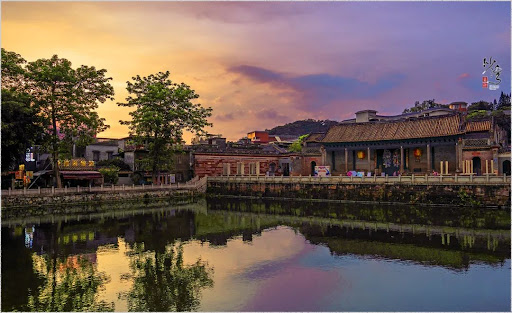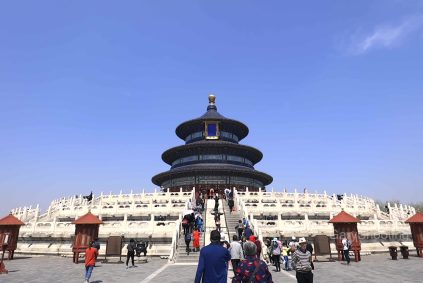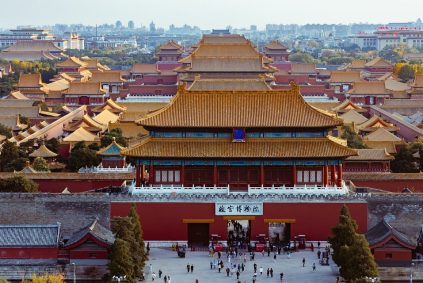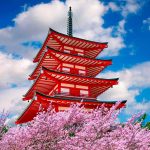Die antike Stadt Shawan in Guangzhou ist ein wichtiger Träger der Lingnan-Kultur. Die kulturelle Erkundung kann aus vier Dimensionen erfolgen: historische Architektur, immaterielles Kulturerbe Kunst, Volksbrauchtum und Esskultur. Das Folgende ist eine spezifische Analyse:
Erste, historische Gebäude und Clankultur
Die antike Stadt Shawan ist etwa erhalten 400 alte Gebäude von der Ming- und Qing-Dynastie bis zur Zeit der Republik China. Die Anordnung der Straßen und Gassen verläuft überwiegend von Ost nach West, und die Gebäude verschiedener Epochen sind in einem linearen Muster verteilt. Ein typischer Vertreter ist die Liugeng-Halle, Dies ist die Ahnenhalle der Familie He in Shawan. Es nimmt ein Layout an “drei Innenhöfe und fünf Öffnungen”, deckt eine Fläche von ab 3,334 Quadratmeter, und ist ein Modell der Ahnenhallenarchitektur in Lingnan. Die Holz- und Steinschnitzereien im Inneren der Halle sind exquisit gefertigt. Die Gedenktafel dokumentiert die herausragenden Leistungen der Familie He bei den kaiserlichen Prüfungen und Beamtenlaufbahnen (wie zum Beispiel 8 Jinshi und fast 50 sie schwören), Präsentation der kulturellen Tradition von “Landwirtschaft und Lesen an die Familie weitergeben” unter dem Lingnan-Clansystem. Zusätzlich, Gebäude wie der Huiyan-Tempel und die Chichang-Halle in der Chebei-Straße zeugen von der blühenden Handelsgeschichte in Shawan.
Zweite, immaterielles Kulturerbe, Kunst und Volkshandwerk
Die antike Stadt Shawan ist bekannt als “Heimatstadt der chinesischen Volkskunst”, mit immateriellen Kulturerbeprojekten auf nationaler Ebene wie dem Löwentanz (Guangdong-Löwentanz) und Guangdong-Musik, sowie immaterielle Kulturerbeprojekte auf Provinzebene wie Shawan Float Color und Ziegelschnitzerei.
Shawan Piao Se: Entstanden in der Mitte der Ming-Dynastie, Es präsentiert mythologische und dramatische Szenen durch die Kombination von “Klingeln” (ein sitzender Schauspieler) Und “Piao” (ein suspendierter Schauspieler), wie z.B. in “Daiyus Blumenbegräbnis” Und “Ren Lins Pagodenanbetung”. Der Kern davon ist die Farbrahmentechnik, Das Gewicht der Schauspieler wird durch schlanke Stahläste getragen, Erstellen eines visuellen Effekts von “verfestigtes Drama und bewegende Skulptur”.
Ziegelschnitzkunst: Vertreten durch He Shiliang, Seine Werke wurden unter anderem in der Liugeng Hall und im He Shiliang Art Museum ausgestellt. Die Themen umfassen Landschaften, Blumen und Vögel, und Figuren. Die Handwerkskunst ist fein und verkörpert den Geist der Lingnan-Handwerkskunst.
Guangdong-Musik: Shawan ist einer der Geburtsorte der Guangdong-Musik. Die Sanren Hall war einst der Veranstaltungsort für Musiker wie He Liutang, He Yunian und He Shaoxia komponierten “Regen schlägt auf Bananenblätter” Und “Drachenrennen um die Meisterschaft”. Touristen können den Charme des erleben “Land der kantonesischen Musik” Hier.
Dritte, Volksfeste und Clanzeremonien
Die volkstümlichen Aktivitäten in der antiken Stadt Shawan sind eng mit dem Clan-Glauben verknüpft, wie zum Beispiel:
Festwagenparade zum Geburtstag des Kaisers des Nordens: Jedes Jahr am dritten Tag des dritten Mondmonats, 21 Festwagen ziehen durch die Straßen, begleitet von Achtklang-Gongs und Trommeln, Es zeigt die Lebendigkeit der kantonesischen Volksbräuche.
Die Eröffnungszeremonie des Schreibpinsels: Es findet in der Wenfeng-Pagode statt (früher bekannt als “Water Green Mountain Green Wen Pavillon”), wo Kinder Kaiser Wenchang huldigen, Kaiser Guan und Kui Star, beten für akademischen Erfolg.
Traditionelle Feste, wie Drachenbootrennen während des Drachenbootfestes und Mondbeobachtungen während des Mittherbstfestes, alle behalten die Merkmale der Lingnan-Wasserstädte.
Vierte, Esskultur und urbanes Leben
Die antike Stadt Shawan ist ein Treffpunkt der Lingnan-Küche. Zu seinen charakteristischen Snacks gehören:
Ingwermilch: Hergestellt durch Mischen von Wasserbüffelmilch mit Ingwersaft, es hat eine zarte und glatte Textur, mit einem süßen und würzigen Geschmack.
Fischhautecke: Die Außenhaut besteht aus Fischfleisch, und die Füllung besteht aus Schweinefleisch und Garnelen. Nach dem Dämpfen oder Kochen, es ist frisch, duftend und lecker.
Paparazzi-Porridge: Hergestellt aus Reismilch, Tofublätter und zerstoßene Erdnüsse, und mit frittierten Teigstangen serviert, Es ist ein traditionelles Frühstück in Shawan.
Touristen können in den Lebensmittelgeschäften in der Anning West Street authentische lokale Aromen genießen, Oder kaufen Sie kulturelle und kreative Produkte aus Shawan-Ziegeln sowie farblich gestaltete Souvenirs als Souvenirs.
Fünfte, Besuchsvorschläge
Empfohlene Route: Südtor → Liugeng-Halle → Chebei-Straße (Huo Er-Haus, Austernschalenhaus) → Anning West Street (Essen) → Sanren Halle (Kantonesische Musik) → Wenfeng-Pagode → He Shiliang Kunstmuseum.
Öffnungszeiten: 09:00-17:30 (Der Einlass endet um 16:30).
Ticketinformationen: Der Eintritt in die antike Stadt ist frei. Das Kombiticket für einige Messehallen kostet 40 Yuan (32 Yuan während des Aktionszeitraums), darunter Hauptattraktionen wie die Liugeng-Halle und die Sanren-Halle.
Kulturelle Erfahrung: Sie können an den Kursen zum immateriellen Kulturerbe der Shawan School teilnehmen (wie zum Beispiel das Schnitzen von Ziegelsteinen), Sehen Sie sich die Löwentanzvorführung an, und spüre das “Leben” Nachlass.
















